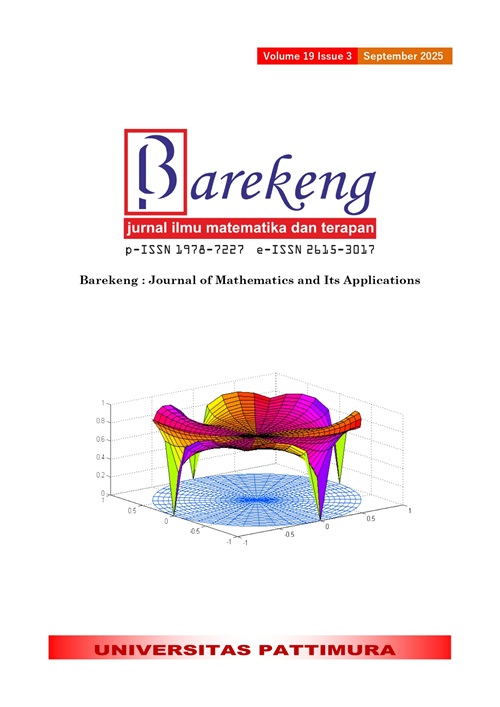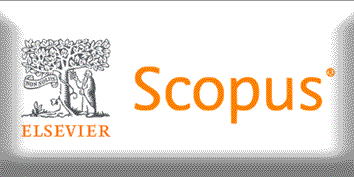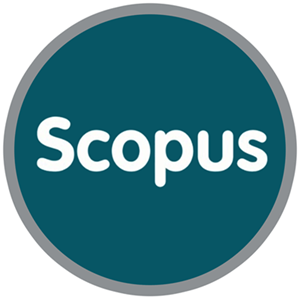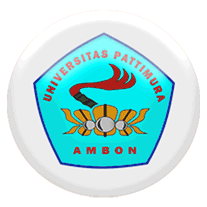MATHEMATICAL MODELLING OF SMOKING BEHAVIOR: TREATMENT AND PREVENTION OPTIMAL CONTROL
Abstract
Smoking remains a critical global public health challenge, with both traditional tobacco use and the rising prevalence of e-cigarettes contributing to significant morbidity and mortality. This study introduces a novel mathematical model that captures the dynamics of smoking behavior by explicitly integrating two smoker populations: traditional tobacco users and e-cigarette users. The model incorporates optimal control strategies aimed at prevention, via public health campaigns, and cessation, through smoking cessation treatments. The smoking model without control has two basic reproduction numbers for tobacco smokers and e-cigarette smokers, and . The extinction smoker’s equilibrium is locally asymptotically stable if and . The extinction tobacco smokers equilibrium is locally asymptotically stable if and . The endemic equilibrium tends to be asymptotically stable whenever and . Simulations demonstrate that implementing control strategies significantly reduces smoking prevalence, with the combined two strategies achieving the most substantial reduction.
Downloads
References
World Health Organization, “SMOKING AND CARDIOVASKULAR HEALTH.” Accessed: Mar. 19, 2024. [Online]. Available: https://applications.emro.who.int/docs/Fact_Sheet_TFI_2018_EN_20398.pdf
World Health Organization, “WHO REPORT ON THE GLOBAL TOBACCO EPIDEMIC, 2023.” Accessed: Mar. 30, 2024. [Online]. Available: https://iris.who.int/bitstream/handle/10665/372043/9789240077164-eng.pdf?sequence=1
World Health Organization, “TOBACCO: E-CIGARETTES.” Accessed: Mar. 19, 2024. [Online]. Available: https://www.who.int/news-room/questions-and-answers/item/tobacco-e-cigarettes
B. Straughan, “E‐CIGARETTE SMOKING WITH PEER PRESSURE,” Math. Methods Appl. Sci., vol. 42, no. 6, pp. 2098–2108, Apr. 2019, doi: https://doi.org/10.1002/mma.5503.
World Health Organization, “WARNING ABOUT THE DANGERS OF TOBACCO.” Accessed: Mar. 30, 2024. [Online]. Available: https://www.who.int/activities/warning-about-the-dangers-of-tobacco
P. Poletti, M. Ajelli, and S. Merler, “THE EFFECT OF RISK PERCEPTION ON THE 2009 H1N1 PANDEMIC INFLUENZA DYNAMICS,” PLoS One, vol. 6, no. 2, p. e16460, Feb. 2011, doi: https://doi.org/10.1371/journal.pone.0016460.
A. Zeb and A. Alzahrani, “NON-STANDARD FINITE DIFFERENCE SCHEME AND ANALYSIS OF SMOKING MODEL WITH REVERSION CLASS,” Results Phys., vol. 21, p. 103785, Feb. 2021, doi: https://doi.org/10.1016/j.rinp.2020.103785 .
T. Şengül and E. Yıldız, “A Dynamical Systems Approach To The Interplay Between Tobacco Smokers, Electronic-Cigarette Smokers And Smoking Quitters,” Chaos, Solitons & Fractals, vol. 146, p. 110870, May 2021, doi: https://doi.org/10.1016/j.chaos.2021.110870.
T. Faniran, A. Ali, M. O. Adewole, B. Adebo, and O. O. Akanni, “ASYMPTOTIC BEHAVIOR OF TUBERCULOSIS BETWEEN SMOKERS AND NON-SMOKERS,” Partial Differ. Equations Appl. Math., vol. 5, p. 100244, Jun. 2022, doi: https://doi.org/10.1016/j.padiff.2021.100244.
M. A. Rois, Fatmawati, C. Alfiniyah, S. Martini, D. Aldila, and F. Nyabadza, “MODELING AND OPTIMAL CONTROL OF COVID-19 WITH COMORBIDITY AND THREE-DOSE VACCINATION IN INDONESIA,” J. Biosaf. Biosecurity, vol. 6, no. 3, pp. 181–195, Sep. 2024, doi: https://doi.org/10.1016/j.jobb.2024.06.004.
A. Abidemi, F. Fatmawati, and O. J. Peter, “DETERMINISTIC DOUBLE DOSE VACCINATION MODEL OF COVID-19 TRANSMISSION DYNAMICS - OPTIMAL CONTROL STRATEGIES WITH COST-EFFECTIVENESS ANALYSIS,” Commun. Biomath. Sci., vol. 7, no. 1, pp. 1–33, Jun. 2024, doi: https://doi.org/10.5614/cbms.2024.7.1.1.
O. Khyar, J. Danane, and K. Allali, “MATHEMATICAL ANALYSIS AND OPTIMAL CONTROL OF GIVING UP THE SMOKING MODEL,” Int. J. Differ. Equations, vol. 2021, pp. 1–13, Nov. 2021, doi: https://doi.org/10.1155/2021/8673020.
I. R. Sofia, S. R. Bandekar, and M. Ghosh, “MATHEMATICAL MODELING OF SMOKING DYNAMICS IN SOCIETY WITH IMPACT OF MEDIA INFORMATION AND AWARENESS,” Results Control Optim., vol. 11, p. 100233, Jun. 2023, doi: https://doi.org/10.1016/j.rico.2023.100233.
J. W. Tang et al., “DISMANTLING MYTHS ON THE AIRBORNE TRANSMISSION OF SEVERE ACUTE RESPIRATORY SYNDROME CORONAVIRUS-2 (SARS-CoV-2),” J. Hosp. Infect., vol. 110, pp. 89–96, Apr. 2021, doi: https://doi.org/10.1016/j.jhin.2020.12.022.
N. C. Achaiah and S. B. Subbarajasetty, “R0 AND RE OF COVID-19: CAN WE PREDICT WHEN THE PANDEMIC OUTBREAK WILL BE CONTAINED?,” Indian J. Crit. Care Med., vol. 24, no. 11, pp. 1125–1127, Dec. 2020, doi: https://doi.org/10.5005/jp-journals-10071-23649.
G. O. Fosu, E. Akweittey, and A. Adu-Sackey, “NEXT-GENERATION MATRICES AND BASIC REPRODUCTIVE NUMBERS FOR ALL PHASES OF THE CORONAVIRUS DISEASE,” Open J. Math. Sci., vol. 4, no. 1, pp. 261–272, Dec. 2020, doi: ttps://doi.org/10.30538/oms2020.0117.
Anisa'Maulina, Dinda, and Chairul Imron. "ANALYSIS AND OPTIMAL CONTROL OF TUBERCULOSIS DISEASE SPREAD MODEL WITH VACCINATION AND CASE FINDING CONTROL (CASE STUDY: SURABAYA CITY)." BAREKENG: Jurnal Ilmu Matematika dan Terapan 18.2 (2024): 1189-1200. doi: https://doi.org/10.30598/barekengvol18iss2pp1189-1200.
F. Brauer, C. Castillo-Chavez, and Z. Feng, “ENDEMIC DISEASE MODELS,” in Mathematical Models in Epidemiology, 1st ed., vol. 69, New York: Springer Science+Business Media, LLC, part of Springer Nature, 2019, pp. 63–116. doi: https://doi.org/10.1007/978-1-4939-9828-9_3.
Handayani, Dewi, Audri Utami Gunadi, and Ria Nurlita Rachmawati. "MATHEMATICAL MODEL OF REPELLENT EFFECT IN DENGUE TRANSMISSION." BAREKENG: Jurnal Ilmu Matematika dan Terapan 18.2 (2024): 1037-1052. doi: https://doi.org/10.30598/barekengvol18iss2pp1037-1052
N. A. Lestari, Sutimin, S. Khabibah, R. H. S. Utomo, R. Herdiana, and A. H. Permatasari, “LOCAL STABILITY ANALYSIS FOR TUBERCULOSIS EPIDEMIC MODEL WITH DIFFERENT INFECTION STAGES AND TREATMENTS,” J. Phys. Conf. Ser., vol. 1943, no. 1, p. 012120, Jul. 2021, doi: https://doi.org/10.1088/1742-6596/1943/1/012120.
L. S. Pontryagin, MATHEMATICAL THEORY OF OPTIMAL PROCESSES. New York: John Wiley & Sons, 1987. doi: https://doi.org/10.1201/9780203749319.
Pontryagin, Lev Semenovich. MATHEMATICAL THEORY OF OPTIMAL PROCESSES. Routledge, 2018. doi: https://doi.org/10.1201/9780203749319.
S. Lenhart and J. T. Workman, OPTIMAL CONTROL APPLIED TO BIOLOGICAL MODELS. New York: Chapman and Hall/CRC, 2007. doi: https://doi.org/10.1201/9781420011418.
Copyright (c) 2025 Ananda Noersena, Fatmawati Fatmawati, Cicik Alfiniyah, Afeez Abidemi

This work is licensed under a Creative Commons Attribution-ShareAlike 4.0 International License.
Authors who publish with this Journal agree to the following terms:
- Author retain copyright and grant the journal right of first publication with the work simultaneously licensed under a creative commons attribution license that allow others to share the work within an acknowledgement of the work’s authorship and initial publication of this journal.
- Authors are able to enter into separate, additional contractual arrangement for the non-exclusive distribution of the journal’s published version of the work (e.g. acknowledgement of its initial publication in this journal).
- Authors are permitted and encouraged to post their work online (e.g. in institutional repositories or on their websites) prior to and during the submission process, as it can lead to productive exchanges, as well as earlier and greater citation of published works.






1.gif)



